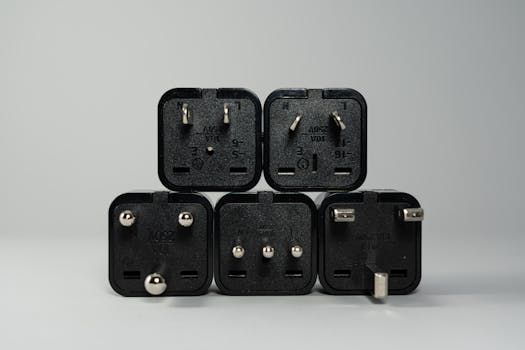
**
Hindustan Copper Limited (HCL), a leading Indian public sector undertaking (PSU) in the mining sector, is undergoing a significant transformation. The company is aggressively shifting towards underground mining techniques to boost copper production and capitalize on the burgeoning demand driven by India's ambitious infrastructure development projects. This strategic move promises to significantly enhance HCL's production capacity, contributing to India's goal of becoming a global copper manufacturing hub. This shift also addresses concerns around sustainable mining practices and environmental impact.
HCL's Strategic Shift to Underground Mining: A Game Changer
Hindustan Copper's decision to embrace underground mining represents a proactive response to several key factors. The increasing demand for copper, fueled by the government's massive infrastructure push – including projects under the Bharatmala Pariyojana, the National Infrastructure Pipeline, and the ambitious renewable energy targets – necessitates a substantial increase in domestic copper production. Traditional open-pit mining methods, while currently employed by HCL, are reaching their limits in terms of resource extraction and environmental sustainability.
Underground mining offers several advantages:
- Increased Resource Recovery: Underground mining allows for the extraction of copper ore from deeper deposits, significantly improving the overall recovery rate compared to open-pit mining. This is particularly crucial as easily accessible surface deposits become depleted.
- Reduced Environmental Impact: Compared to open-pit mining, underground mining minimizes land disturbance, reduces visual pollution, and lowers the risk of water contamination. This aligns with HCL's commitment to environmentally responsible mining practices and enhances its ESG (Environmental, Social, and Governance) profile.
- Improved Safety and Efficiency: Modern underground mining techniques utilize advanced technologies, enhancing worker safety and operational efficiency. This includes improved ventilation systems, sophisticated machinery, and remote monitoring capabilities.
- Higher Ore Grade: Underground mining often targets higher-grade ore bodies, leading to better copper extraction and reduced processing costs.
Doubling Production Capacity: Ambitious Targets and Investment
Hindustan Copper aims to double its copper production capacity in the coming years, a bold target that necessitates significant investment in infrastructure, technology, and skilled manpower. The company is actively pursuing modernization and expansion plans across its various mines, including the implementation of state-of-the-art underground mining techniques. This includes investments in:
- Advanced Mining Equipment: HCL is acquiring sophisticated mechanized equipment for underground mining operations, improving efficiency and worker safety. This includes specialized drill rigs, loaders, and haulage systems.
- Technological Upgradation: The company is adopting advanced technologies such as automated guided vehicles (AGVs), real-time monitoring systems, and data analytics to optimize mining processes and reduce operational costs.
- Skill Development Programs: Investing in training and development programs for its workforce is crucial. HCL recognizes the need for skilled personnel to operate and maintain the advanced equipment used in underground mining.
Copper Demand Surge: Infrastructure Projects Fueling Growth
India's infrastructure development is experiencing an unprecedented boom, creating a massive demand for copper. This surge is driven by various mega-projects:
- Bharatmala Pariyojana: This ambitious road construction program requires vast quantities of copper for electrical wiring, signaling systems, and other infrastructure components.
- National Infrastructure Pipeline (NIP): The NIP encompasses a wide range of infrastructure projects across various sectors, including transportation, energy, and water management, all of which require significant copper usage.
- Renewable Energy Expansion: India's commitment to renewable energy sources, particularly solar and wind power, necessitates a substantial increase in copper production for electrical transmission and distribution networks.
The Role of Hindustan Copper in India's Copper Security
HCL's increased copper production will contribute significantly to India's copper security, reducing reliance on imports and strengthening the domestic mining industry. Currently, India imports a significant portion of its copper requirements. HCL's expansion plans are a crucial step towards self-reliance in copper production, a vital resource for national development.
Challenges and Opportunities: Navigating the Path Ahead
While HCL's shift to underground mining presents significant opportunities, the company also faces several challenges:
- High Capital Expenditure: Investing in advanced underground mining technology and infrastructure requires substantial capital investment.
- Regulatory Compliance: Adhering to stringent environmental regulations and obtaining necessary approvals for underground mining projects can be complex and time-consuming.
- Skill Gap: Finding and training skilled personnel to operate and maintain the advanced equipment used in underground mining is a critical challenge.
However, the potential rewards of this strategic shift are substantial. HCL's initiative aligns perfectly with the government's "Make in India" initiative, promoting domestic manufacturing and reducing dependence on imports. The increased copper production will support numerous downstream industries, stimulating economic growth and job creation across the country. By embracing modern technology and sustainable practices, Hindustan Copper is positioning itself for success in the rapidly evolving global mining landscape. The company's commitment to underground mining represents a significant step towards meeting India's growing copper demand and securing its position as a key player in the global copper market. The future looks bright for HCL, as it navigates this transition and contributes to India's infrastructure ambitions.




















